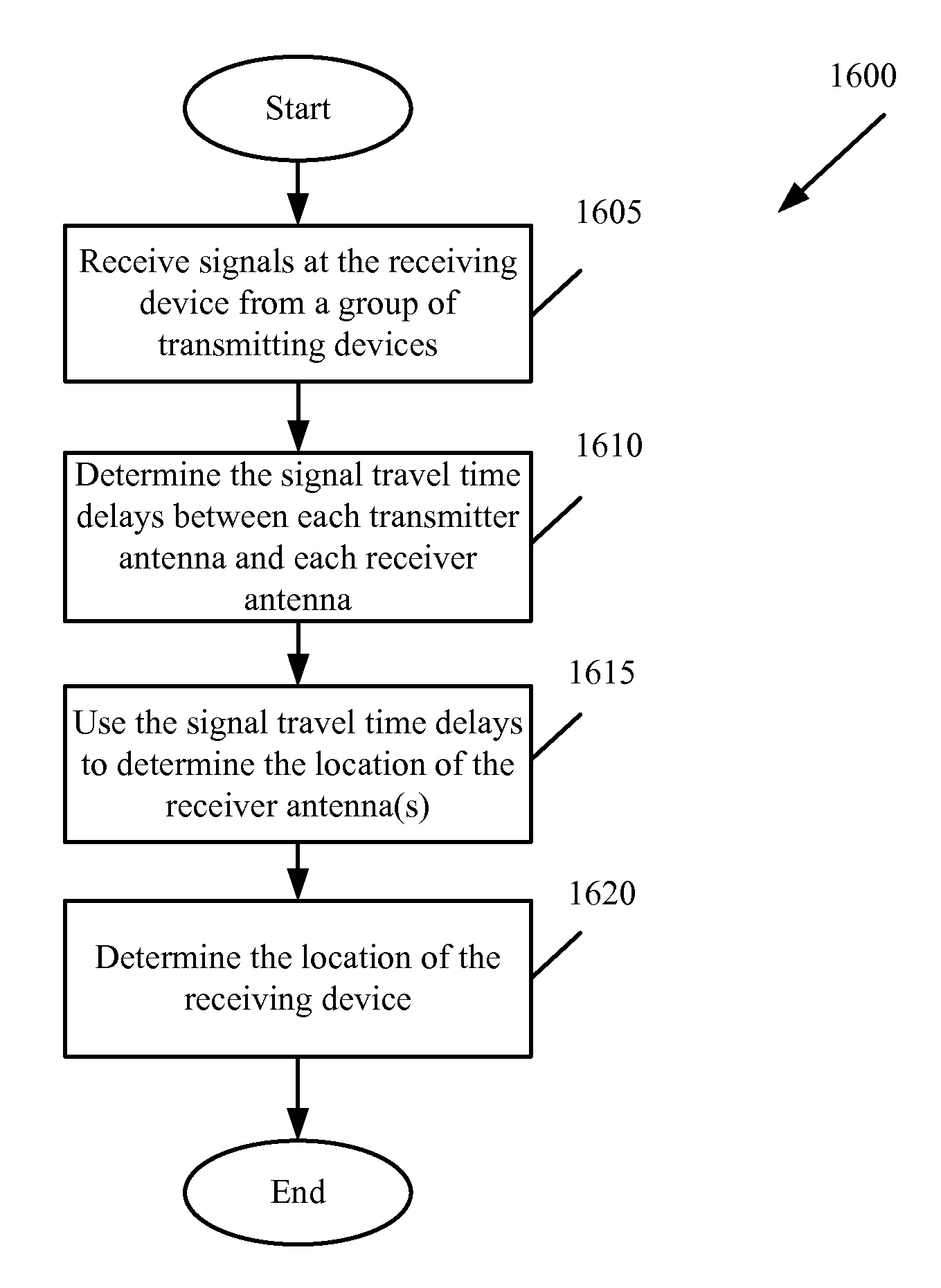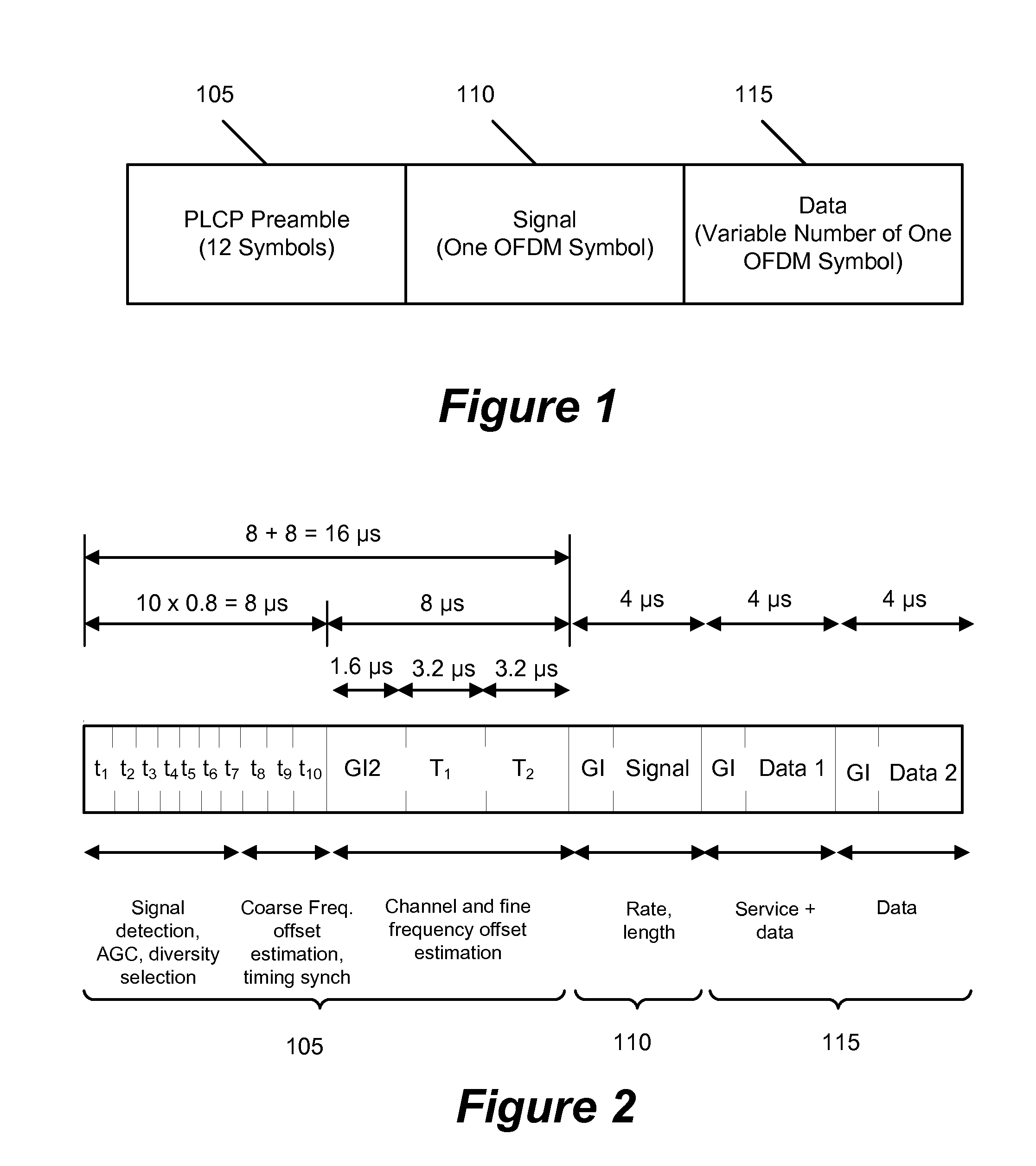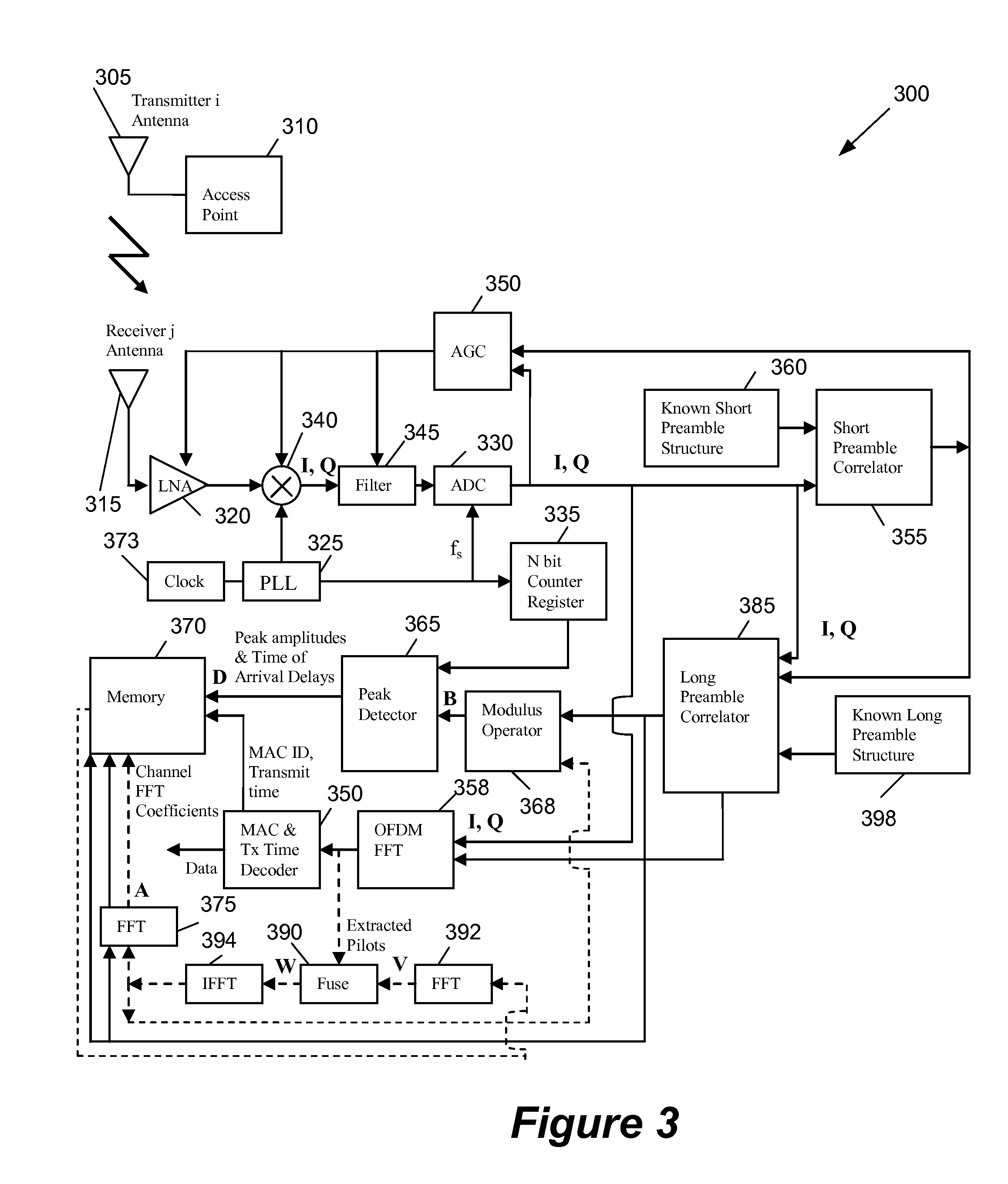Wireless positioning approach using time-delay of signals with a known transmission pattern
a technology of transmission pattern and signal delay, applied in direction finders using radio waves, instruments, sport apparatus, etc., can solve the problems of direct line of sight and cannot work in an indoor environment, limited range of ir, and direct line of sight requirements for ir
- Summary
- Abstract
- Description
- Claims
- Application Information
AI Technical Summary
Benefits of technology
Problems solved by technology
Method used
Image
Examples
Embodiment Construction
[0032]In the following detailed description of the invention, numerous details, examples, and embodiments of the invention are set forth and described. However, it will be clear and apparent to one skilled in the art that the invention is not limited to the embodiments set forth and that the invention may be practiced without some of the specific details and examples discussed.
[0033]Some embodiments provide methods and systems that employ a known Radio Frequency (RF) transmission pattern to locate a receiver object. As the signal travels between a transmitter and a receiver the system calculates the time delay between the two. By repeating this process with different known coordinate transmitters it is possible to process the time delay information and calculate the unknown position coordinates of the receiver. This calculated position can then be used for location-based services, gaming consoles, and hand gesture recognition systems. The method can be applied to any system that use...
PUM
 Login to View More
Login to View More Abstract
Description
Claims
Application Information
 Login to View More
Login to View More - R&D
- Intellectual Property
- Life Sciences
- Materials
- Tech Scout
- Unparalleled Data Quality
- Higher Quality Content
- 60% Fewer Hallucinations
Browse by: Latest US Patents, China's latest patents, Technical Efficacy Thesaurus, Application Domain, Technology Topic, Popular Technical Reports.
© 2025 PatSnap. All rights reserved.Legal|Privacy policy|Modern Slavery Act Transparency Statement|Sitemap|About US| Contact US: help@patsnap.com



